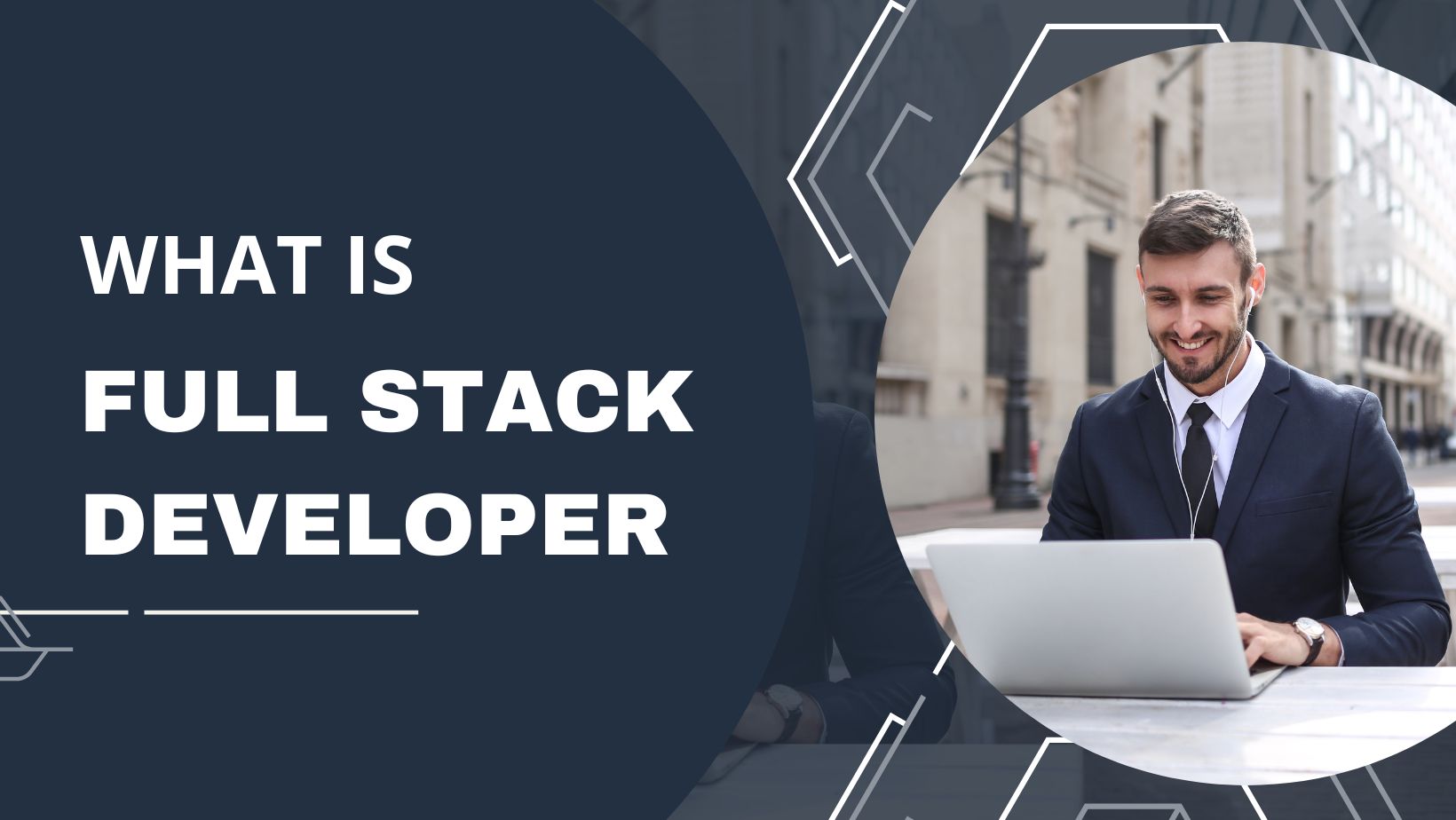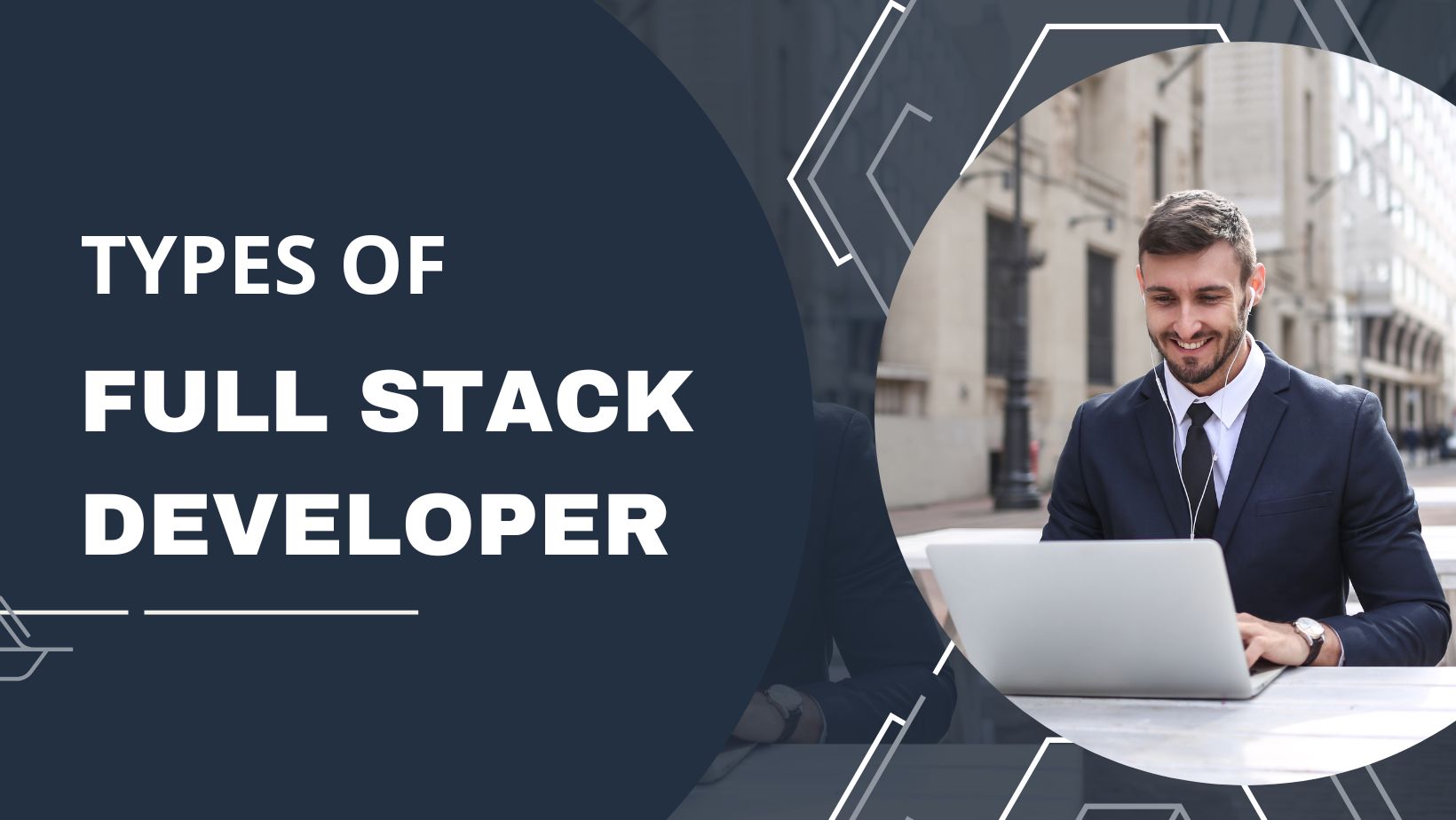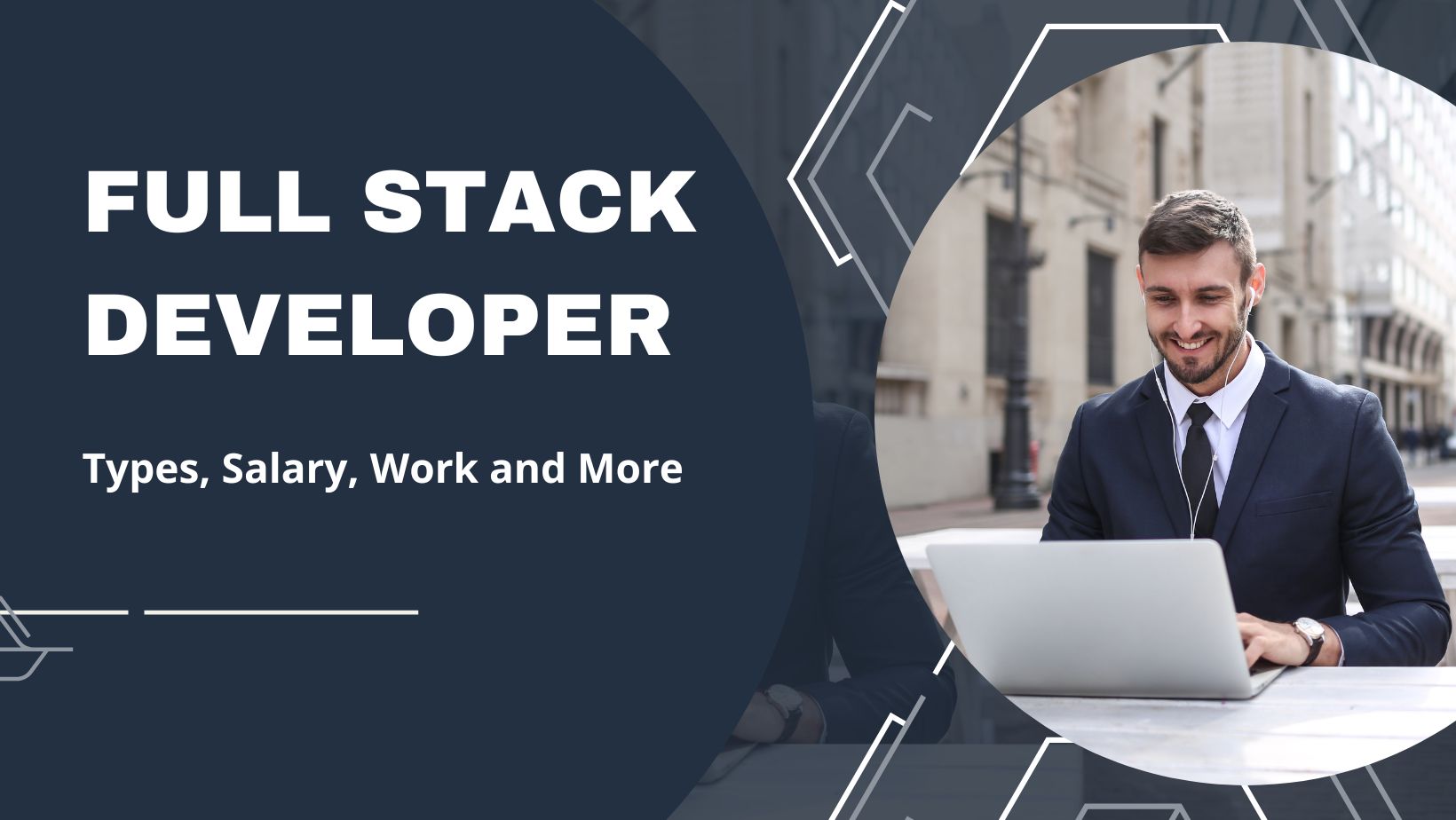Full Stack Developer – Types, Salary, Work and More in 2024
Hello friends, today we will know detailed information about Full Stack Developer.
What is Full Stack Developer?
A full stack developer is a software developer who has expertise in both front-end and back-end web development.
They have the skills and knowledge to develop complete web applications from start to finish, handling both client-side and server-side programming.
Front-end development involves creating the user interface and designing the look and feel of a website or application.
This includes working with languages such as HTML, CSS, and JavaScript, as well as popular frameworks like React, Angular, and Vue.
Back-end development involves writing server-side code to manage data, handle user authentication, and perform other tasks that require server-side processing.
Full stack developers typically work with languages such as Python, Ruby, Java, and PHP, as well as popular frameworks like Node.js, Django, and Ruby on Rails.
In addition to these technical skills, full stack developers are also typically proficient in database management, version control, and testing and debugging.
They understand the importance of scalability, performance, and security in web development, and can develop applications that meet these requirements.
Full stack developers may work for companies of all sizes, from small startups to large corporations.
They may work as part of a team, collaborating with designers, product managers, and other developers to build web applications.
They may also work as freelancers or independent contractors, taking on projects for clients and managing their workload.
Overall, a full-stack developer is a versatile and highly skilled professional who can develop complete web applications from start to finish, handling both front-end and back-end programming with ease.

Types of Full Stack Developer
There are several types of Full Stack Developers, each with their specialization and expertise. Here are some of the most common types:
MEAN Stack Developer: This type of Full Stack Developer is proficient in developing web applications using the MEAN stack, which consists of MongoDB, Express.js, AngularJS, and Node.js.
MERN Stack Developer: This type of Full Stack Developer is proficient in developing web applications using the MERN stack, which consists of MongoDB, Express.js, React, and Node.js.
LAMP Stack Developer: This type of Full Stack Developer is proficient in developing web applications using the LAMP stack, which consists of Linux, Apache, MySQL, and PHP.
Ruby on Rails Developer: This type of Full Stack Developer is proficient in developing web applications using the Ruby on Rails framework, which is based on the Ruby programming language.
Python Developer: This type of Full Stack Developer is proficient in developing web applications using Python, along with frameworks such as Django, Flask, or Pyramid.
Java Developer: This type of Full Stack Developer is proficient in developing web applications using Java, along with frameworks such as Spring, Hibernate, or Struts.
.NET Developer: This type of Full Stack Developer is proficient in developing web applications using the .NET framework, along with technologies such as C#, ASP.NET, and SQL Server.
Front-end Developer: This type of Full Stack Developer is proficient in developing the client-side of web applications, using HTML, CSS, JavaScript, and front-end frameworks such as AngularJS, React, or Vue.js.
Back-end Developer: This type of Full Stack Developer is proficient in developing the server-side of web applications, using languages such as Java, Python, Ruby, or .NET, and frameworks such as Node.js, Ruby on Rails, or Spring.
Mobile App Developer: This type of Full Stack Developer is proficient in developing mobile applications for iOS and/or Android, using frameworks such as React Native or Flutter, as well as back-end technologies such as Firebase or AWS.
How to become a Full Stack Developer
Becoming a Full Stack Developer requires a combination of technical and soft skills. Here are some steps you can take to become a Full Stack Developer:
Learn HTML, CSS, and JavaScript: HTML, CSS, and JavaScript are the building blocks of web development. Start by learning the basics of these three technologies.
Learn a Backend Language: Once you have a good grasp of HTML, CSS, and JavaScript, you need to learn a backend programmings language like Python, PHP, Ruby, or Java.
Learn a Framework: To become a Full Stack Developer, you need to know at least one backend framework like Django, Ruby on Rails, or Laravel.
Learn Database Technology: You will also need to understand how to interact with databases like MySQL, PostgreSQL, or MongoDB.
Learn Version Control: Version control systems like Git are essential for any software development process. Learn how to use Git to manage your code and collaborate with other developers.
Learn Cloud Computing: Cloud computing has become increasingly important in recent years, and Full Stack Developers need to know how to deploy applications to the cloud.
Practice, Practice, Practice: The best way to become a Full Stack Developer is to practice building real-world applications. Build small projects and work your way up to larger, more complex applications.
Learn Soft Skills: Soft skills like communication, teamwork, and time management are just as important as technical skills. Make sure to work on developing these skills as well.
Keep Learning: The world of software development is constantly evolving, so you need to be constantly learning and keeping up with new technologies and trends.
Build a Portfolio: Finally, build a portfolio of your work and showcase your skills to potential employers. This will help you stand out and land your first Full Stack Developer job.
What is the salary of a Full Stack Developer in India?
The salary of a Full Stack Developer in India can vary depending on several factors such as experience, location, company size, and industry.
According to various online sources, the average salary of a Full Stack Developer in India can range from Rs. 4-12 lakhs per annum (approximately $5,500-USD 16,500) for entry-level positions and can go up to Rs. 20-30 lakhs per annum (approximately $27,000-USD 41,000) for senior-level positions.
However, it’s important to note that these are just rough estimates and the actual salary can vary widely based on the individual’s skills and experience, as well as the company’s requirements and compensation policies.
What is the salary of a Full Stack Developer in a Foreign Country?
The salary of a Full Stack Developer in a foreign country can vary greatly depending on several factors such as location, industry, experience, and company size.
According to data from Glassdoor, the average salary of a Full Stack Developer in the United States is around USD 87,000 per year, while in Canada it is around CAD 76,000 per year.
In the United Kingdom, the average salary for a Full Stack Developer is around GBP 40,000 per year, while in Australia it is around AUD 97,000 per year.
It’s important to note that these are just rough estimates, and the actual salary can vary widely based on individual skills, experience, company requirements, and other factors.
Additionally, it’s important to consider the cost of living in different locations when comparing salaries in different countries.
Full Stack Developer Specialist
A Full Stack Developer Specialist is a professional who has advanced skills and expertise in multiple areas of web development.
They have a deep understanding of front-end technologies like HTML, CSS, and JavaScript, as well as backend technologies like Node.js, Ruby on Rails, or Django.
They are also proficient in database technologies like SQL or NoSQL and have experience working with cloud platforms like AWS, Google Cloud, or Microsoft Azure.
In addition to technical skills, a Full Stack Developer Specialist typically has strong problem-solving abilities, excellent communication skills, and the ability to work collaboratively with other team members.
They are often responsible for designing and building complex web applications from start to finish, and may also be involved in project management, code reviews, and mentoring junior developers.
Due to their advanced skills and expertise, Full Stack Developer Specialists are in high demand in many industries, including tech, finance, healthcare, and e-commerce.
Salaries for Full Stack Developer Specialists can vary widely depending on location, industry, and experience, but they are generally higher than salaries for entry-level Full Stack Developers.

FAQ
What are the skills required for a full stack developer?
A Full Stack Developer should have a broad range of skills that cover both front-end and back-end development. Here are some of the key skills required for a Full Stack Developer:
HTML/CSS: Knowledge of HTML and CSS is essential for creating the visual elements of a website or application.
JavaScript: Strong proficiency in JavaScript and its various libraries and frameworks is necessary to build interactive and dynamic user interfaces.
Backend programming languages: A Full Stack Developer should have expertise in at least one server-side programming language like Node.js, Python, Ruby, or Java.
Web application frameworks: Proficiency in web application frameworks like React, Angular, Vue.js, Django, Ruby on Rails, or Laravel is necessary for building scalable and robust web applications.
Databases and data storage: Knowledge of database systems like MySQL, PostgreSQL, MongoDB, or Cassandra, and expertise in data modeling and storage is important.
RESTful APIs: Understanding RESTful APIs and how they interact with server-side applications is necessary.
Version control: A Full Stack Developer should be proficient in using version control systems like Git to manage code changes and collaborate with other developers.
Cloud computing: Understanding cloud platforms like AWS, Google Cloud, or Microsoft Azure is essential for deploying applications to the cloud.
Testing and debugging: Knowledge of testing frameworks and debugging tools is essential for ensuring the quality of the code.
Soft skills: Strong communication, collaboration, and time management skills are important for working effectively in a team and managing projects.
What is a full-stack developer’s salary?
The salary of a Full Stack Developer can vary widely depending on several factors such as location, years of experience, industry, and company size.
According to various online sources, the average salary of a Full Stack Developer in the United States ranges from $70,000 to $135,000 per year, while in the United Kingdom, it ranges from £30,000 to £70,000 per year. In India, the salary of a Full Stack Developer ranges from Rs. 4 lakhs to Rs. 20 lakhs per annum.
However, it’s important to note that these are just rough estimates, and the actual salary can vary greatly based on individual skills, experience, and company requirements.
Factors such as the specific technologies and frameworks a Full Stack Developer specializes in, the industry they work in, and the location of their employer can all impact their salary. Additionally, salaries can vary based on the demand for Full Stack Developers in a given market.
Is the full stack developer job easy?
Being a Full Stack Developer is not necessarily an easy job. Full Stack Development requires a wide range of technical skills and the ability to work with different technologies, platforms, and programming languages.
The role involves both front-end and back-end development, which means that Full Stack Developers need to be familiar with a range of tools and frameworks.
They need to have a deep understanding of web development concepts, including user experience, security, scalability, and performance.
Additionally, Full Stack Developers often work in fast-paced environments and are expected to deliver high-quality solutions under tight deadlines.
They may also need to collaborate with other developers, project managers, and stakeholders, which requires strong communication and teamwork skills.
However, with the right training, experience, and motivation, Full Stack Development can be a rewarding and fulfilling career.
It offers the opportunity to work on diverse projects, build innovative solutions, and constantly learn and grow as a developer.
Which language is best for a full stack developer?
There is no one “best” programming language for Full Stack Developers, as the choice of language depends on several factors, including the specific requirements of the project, the needs of the organization, and the personal preferences and expertise of the developer. However, here are some popular languages for Full Stack Development:
JavaScript: JavaScript is the most popular language for Full Stack Development, as it is the language of the web and is used extensively for front-end development using frameworks like React, Angular, and Vue.js, as well as for back-end development using Node.js.
Python: Python is a versatile language that is popular for back-end development using frameworks like Django and Flask, as well as for data science and machine learning applications.
Ruby: Ruby is a powerful and expressive language that is often used for building web applications using the Ruby on Rails framework.
Java: Java is a popular language for building large-scale enterprise applications, as it offers strong support for object-oriented programming, robust libraries, and frameworks like Spring and Hibernate.
PHP: PHP is a widely-used language for web development, particularly for building dynamic websites and content management systems using frameworks like Laravel and Symfony.
Ultimately, the choice of language depends on the specific requirements and preferences of the project and the organization. Full Stack Developers need to have experience and expertise in multiple programming languages and frameworks to be versatile and effective in their work.
Is Python full stack?
Python is a versatile language that can be used for Full Stack Development, but it is not typically considered a full-stack language by itself.
While Python can be used for back-end development, it is not commonly used for front-end development, which typically involves working with HTML, CSS, and JavaScript.
However, Python is often used in conjunction with other technologies and frameworks to build full-stack web applications.
For example, Python can be used with frameworks like Django, Flask, and Pyramid for back-end development, while front-end development can be done using JavaScript frameworks like React or Angular.
So, while Python is not considered a full-stack language by itself, it is a valuable tool in the Full Stack Developer’s toolkit and can be used effectively in combination with other technologies to build full-stack web applications.
Which full stack is in demand?
The demand for specific Full Stack Development technologies and frameworks can vary depending on several factors, including industry, location, and specific project requirements. However, here are some popular Full Stack technologies and frameworks that are currently in high demand:
MERN Stack: MERN (MongoDB, Express.js, React, Node.js) is a popular Full Stack technology stack for building scalable and dynamic web applications. It is particularly popular for building real-time applications and chatbots.
MEAN Stack: MEAN (MongoDB, Express.js, Angular, Node.js) is another popular Full Stack technology stack that is similar to MERN but uses Angular for front-end development.
Django: Django is a high-level Python web framework that is popular for building complex and scalable web applications. It is particularly popular for building e-commerce and social networking applications.
Ruby on Rails: Ruby on Rails is a popular Full Stack web framework for building scalable and dynamic web applications. It is particularly popular for building social networking and content management systems.
React: React is a popular front-end JavaScript library for building scalable and dynamic web applications. It is particularly popular for building single-page applications and mobile applications.
Vue.js: Vue.js is a progressive front-end JavaScript framework for building user interfaces and single-page applications. It is particularly popular for building lightweight and fast applications.
Ultimately, the choice of Full Stack technology and framework depends on the specific requirements and preferences of the project and the organization. Full Stack Developers need to stay up-to-date with the latest technologies and frameworks to stay competitive in the job market.
Can a non-IT person learn full stack developer?
Yes, a non-IT person can certainly learn Full Stack Development with the right training and resources. However, it may require more time and effort to learn the necessary technical skills compared to someone with a background in IT.
To become a Full Stack Developer, you will need to have a solid understanding of various programming languages, web development concepts, and different tools and frameworks.
You can start by learning the basics of HTML, CSS, and JavaScript, which are the building blocks of web development. Then, you can move on to learning popular back-end technologies like Node.js, Python, Ruby on Rails, and PHP.
There are a variety of online courses, boot camps, and self-learning resources available for those who want to learn Full Stack Development.
Some popular online resources include Codecademy, Udacity, Coursera, and FreeCodeCamp. Additionally, many coding boot camps offer Full Stack Development courses that can provide more structured learning and hands-on experience.
It’s important to note that becoming a Full Stack Developer requires dedication and hard work, regardless of your background.
However, with the right mindset and resources, anyone can learn and become proficient in Full Stack Development.
Is full stack developer Good for freshers?
Full Stack Development can be a good career choice for freshers, but it depends on their interests and goals.
Full Stack Development requires a wide range of skills, including front-end development, back-end development, and database management, which can be challenging for beginners.
However, with the right training and dedication, freshers can become proficient in Full Stack Development and build a successful career in this field.
One advantage of starting a career in Full Stack Development as a fresher is that it allows you to gain experience in multiple areas of web development.
This can help you develop a well-rounded skillset and make you more marketable to potential employers. Additionally, the demand for Full Stack Developers is high, and there are many job opportunities available for those with the necessary skills.
However, it’s important to note that becoming a successful Full Stack Developer takes time and effort.
Fresher’s may need to start with entry-level roles and work their way up, gaining experience and building their skills over time.
It’s also important to stay up-to-date with the latest technologies and frameworks to remain competitive in the job market.
Overall, Full Stack Development can be a good career choice for freshers who are passionate about web development and are willing to put in the effort to learn and grow in this field.
How can I learn full stack?
To learn Full Stack Development, you can follow these steps:
Learn the basics of web development: Start by learning the basics of HTML, CSS, and JavaScript, which are the building blocks of web development. You can take online courses or read books to learn these technologies.
Choose a backend language and framework: You will need to choose a back-end language and framework to build the server side of your web application. Some popular options include Node.js, Python (Django or Flask), Ruby on Rails, and PHP. Choose the one that aligns with your interests and career goals.
Learn a front-end framework: To create interactive and engaging user interfaces, you will need to learn a front-end framework like React, Angular, or Vue.js. These frameworks allow you to build complex UI components and interact with back-end APIs.
Learn database management: Full Stack Developers need to have a good understanding of database management to build scalable and efficient web applications. Learn about popular database systems like MySQL, MongoDB, or PostgreSQL.
Practice and build projects: Practice your skills by building real-world projects that utilize the technologies and frameworks you have learned. This will help you gain hands-on experience and build a portfolio of work that showcases your skills.
Join communities and network: Join online communities, attend meetups, and network with other Full Stack Developers to stay up-to-date with the latest trends and technologies and learn from others in the field.
There are many online resources and courses available for learning Full Stack Development. Some popular platforms include Udemy, Coursera, Codecademy, FreeCodeCamp, and Udacity.
Additionally, many coding boot camps offer Full Stack Development courses that provide structured learning and hands-on experience.
Which is the best Python or full-stack?
Python and Full Stack Development are not mutually exclusive and are different concepts. Python is a programming language that is widely used in various fields such as web development, data science, artificial intelligence, and automation, among others.
Full Stack Development, on the other hand, refers to developing the front-end and back-end of web applications using multiple technologies.
Choosing between Python and Full Stack Development depends on your interests and career goals.
If you are interested in working with data science, automation, or machine learning, then learning Python would be a good choice.
Python has a wide range of libraries and frameworks that can help you build powerful and efficient applications in these areas.
If you are interested in building web applications and want to become a Full Stack Developer, then learning Full Stack Development is a good choice.
Full Stack Development requires knowledge of multiple technologies and frameworks, including HTML, CSS, JavaScript, and back-end technologies like Node.js, Ruby on Rails, Python (Django or Flask), or PHP.
In conclusion, choosing between Python and Full Stack Development depends on your interests and career goals.
If you are interested in working with data science or automation, then learning Python is a good choice. If you want to build web applications and become a Full Stack Developer, then learning Full Stack Development is a good choice.
What is the salary of a full stack developer in India?
The salary of a Full Stack Developer in India can vary depending on various factors such as experience, skills, location, and the company. On average, a Full Stack Developer in India can expect to earn between INR 3-20 lakhs per annum.
For freshers or those with less than a year of experience, the salary can range from INR 3-6 lakhs per annum. For those with 2-4 years of experience, the salary can range from INR 6-12 lakhs per annum, and for those with 5 or more years of experience, the salary can range from INR 12-20 lakhs per annum.
However, it’s important to note that these are just rough estimates and the actual salary can vary based on various factors such as company size, location, and job responsibilities.
Can I become a full stack developer in 3 months?
Becoming a Full Stack Developer in just 3 months is quite challenging, but it’s not impossible. It would require a lot of hard work, dedication, and commitment. Here are some steps that you can follow to become a Full Stack Developer in 3 months:
Define your learning goals: Before you start, define your learning goals and create a learning plan. Identify the technologies and frameworks you need to learn and break them down into manageable chunks.
Focus on the basics: Start by focusing on the basics of web development, such as HTML, CSS, and JavaScript. Build a strong foundation in these technologies before moving on to more advanced topics.
Choose a backend language and framework: Choose a back-end language and framework to build the server side of your web application. Some popular options include Node.js, Python (Django or Flask), Ruby on Rails, and PHP. Choose the one that aligns with your interests and career goals.
Learn a front-end framework: To create interactive and engaging user interfaces, learn a front-end framework like React, Angular, or Vue.js. These frameworks allow you to build complex UI components and interact with back-end APIs.
Build projects: Practice your skills by building real-world projects that utilize the technologies and frameworks you have learned. This will help you gain hands-on experience and build a portfolio of work that showcases your skills.
Join online communities: Join online communities, attend meetups, and network with other Full Stack Developers to stay up-to-date with the latest trends and technologies and learn from others in the field.
While it is possible to learn Full Stack Development in 3 months, it’s important to note that this timeline may vary depending on your prior experience, learning pace, and the complexity of the projects you choose to build.
Additionally, becoming proficient in Full Stack Development requires continuous learning and practice, so be prepared to continue learning beyond the initial 3 months.
How many hours work for a full stack developer?
The number of hours a Full Stack Developer works can vary depending on the company, project deadlines, and workload.
In general, Full Stack Developers typically work 40 to 50 hours per week, which is the standard workweek in most countries.
However, it’s not uncommon for Full Stack Developers to work longer hours, especially when working on complex projects or when there are tight deadlines.
Some Full Stack Developers may also work on weekends or be on-call in case of urgent issues that need to be resolved.
It’s important to note that while working long hours may be necessary at times, it’s also essential to prioritize work-life balance to prevent burnout and maintain overall well-being.
Many companies have policies in place to promote work-life balance, such as flexible work schedules, remote work options, and time-off policies.
Is it hard to become a full stack?
Becoming a Full Stack Developer is challenging, but it’s not impossible. Full Stack Development requires knowledge of both front-end and back-end technologies, which can take time to learn and master.
It also requires a strong understanding of software development principles, project management, and problem-solving skills.
To become a Full Stack Developer, you’ll need to learn a variety of technologies such as HTML, CSS, JavaScript, and at least one back-end programming language and framework.
Additionally, you’ll need to learn how to work with databases, web servers, and other technologies that are commonly used in web development.
While learning these technologies can be challenging, there are many resources available to help you. You can take online courses, attend coding boot camps, and participate in online communities to learn from others and gain hands-on experience.
Overall, becoming a Full Stack Developer requires hard work, dedication, and a willingness to continuously learn and improve your skills. It may be challenging, but with persistence and effort, it’s achievable.
Does a full stack developer need coding?
Yes, Full Stack Developers need to know how to code. Full Stack Development requires knowledge of both front-end and back-end technologies, which includes programming languages, frameworks, and tools.
Full Stack Developers typically work on both the client-side and server-side of web applications, so they need to be proficient in languages like HTML, CSS, JavaScript, and at least one back-end language such as Python, Ruby, or Java.
Full Stack Developers also need to know how to work with databases, web servers, and other technologies that are commonly used in web development.
They need to be able to write code for both the user interface (UI) and the back-end logic of web applications.
In addition to coding, Full Stack Developers also need to have strong problem-solving skills, a good understanding of software development principles, and the ability to work collaboratively with other team members.
Overall, coding is a critical skill for Full Stack Developers and is an essential part of the job.
Which full stack is best for beginners?
Some many full-stack technologies and frameworks are suitable for beginners. Here are some popular full-stack technologies that are beginner-friendly:
MEAN Stack (MongoDB, Express.js, AngularJS, and Node.js): MEAN is a popular full-stack technology that uses JavaScript throughout the entire stack, making it a good choice for beginners who already have some experience with JavaScript.
MERN Stack (MongoDB, Express.js, React, and Node.js): MERN is similar to MEAN but uses React instead of AngularJS for front-end development. React is known for its simplicity and ease of use, making it a popular choice for beginners.
Django: Django is a popular Python-based full-stack framework that is known for its simplicity and ease of use. It has a large community of developers and is well-documented, making it a good choice for beginners.
Laravel: Laravel is a PHP-based full-stack framework that is known for its simplicity and elegant syntax. It has a large community of developers and is well-documented, making it a good choice for beginners who are interested in PHP development.
Ruby on Rails: Ruby on Rails is a popular full stack framework that uses the Ruby programming language. It is known for its simplicity and ease of use and has a large community of developers and resources, making it a good choice for beginners.
Overall, the best full stack technology for beginners depends on their personal preferences and skill level. It’s important to choose a technology that you enjoy working with and that fits your needs and goals.
Full stack developer course
There are many online and offline courses available that can help you learn Full Stack Development. Here are some popular options:
Udemy: Udemy is an online learning platform that offers many Full Stack Development courses, ranging from beginner to advanced levels. The courses are taught by industry experts and cover a wide range of topics, including HTML, CSS, JavaScript, React, Node.js, and more.
Coursera: Coursera is an online learning platform that partners with top universities and organizations to offer Full Stack Development courses. The courses are self-paced and can be completed online, and many offer certificates upon completion.
edX: edX is another online learning platform that offers Full Stack Development courses from top universities and organizations. The courses are self-paced and can be completed online, and many offer certificates upon completion.
Codecademy: Codecademy is an online learning platform that specializes in coding and programming courses. They offer Full Stack Development courses that cover HTML, CSS, JavaScript, and more.
Full Stack Open: Full Stack Open is a free online course offered by the University of Helsinki that covers modern Full Stack Development technologies. The course covers HTML, CSS, JavaScript, React, Node.js, and more.
Overall, there are many Full Stack Development courses available, both online and offline. It’s important to choose a course that fits your learning style and goals and that provides hands-on experience with real-world projects.
Full stack developer vs software engineer
Full Stack Developer and Software Engineer are two distinct job roles in the software industry, although they share some similarities.
A Full Stack Developer is a software developer who is skilled in both front-end and back-end development.
They are responsible for developing web applications from start to finish, which includes designing the user interface, developing the back-end logic, and deploying the application to a server.
Full Stack Developers typically use a variety of technologies, including HTML, CSS, JavaScript, Node.js, and databases such as MySQL and MongoDB.
On the other hand, a Software Engineer is responsible for designing, developing, testing, and maintaining software systems.
They typically work on complex projects and are responsible for ensuring that the software is scalable, efficient, and reliable.
Software Engineers may specialize in a particular area, such as web development, mobile development, or data science.
They use a variety of programming languages, such as Java, Python, or C++, and may work with databases, cloud technologies, and other tools and frameworks.
While there is some overlap between the two roles, Full Stack Developers tend to be more focused on web development and front-end technologies, while Software Engineers may work on a wider variety of projects and technologies.
Ultimately, the choice between Full Stack Development and Software Engineering depends on your interests, skills, and career goals.
Investment Banker | Chartered Accountant | IT Manager | Dentist | Software Architect | Orthodontist | Data Scientist | Psychiatrist | Physician | Surgeon







